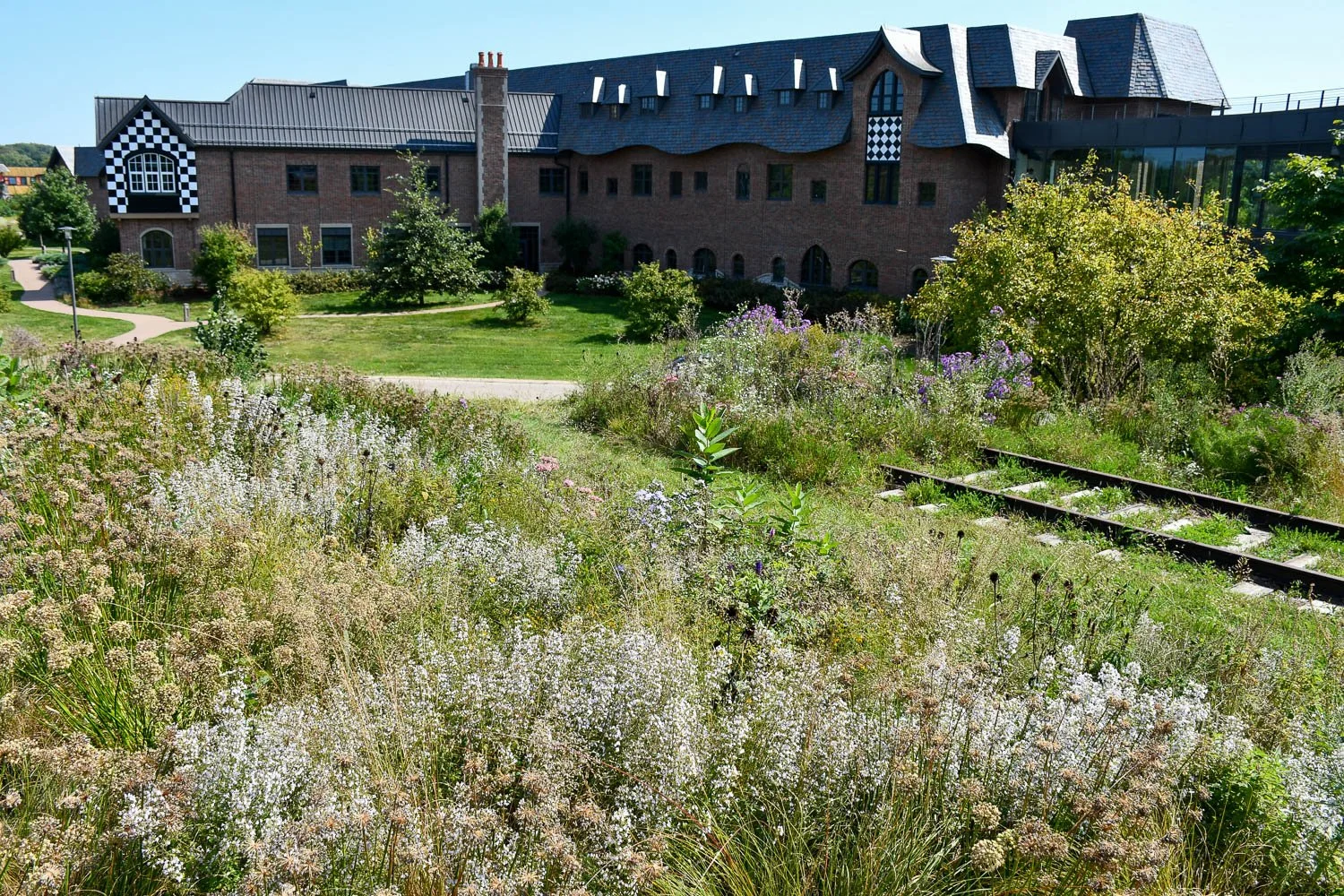If you live in Nacogdoches, you might have seen a weird sight on North Street.
A man was laying in a contorted, prostrate position on the sidewalk angling his camera for the best shot mere feet from the road with traffic zooming by.
That was me.
I was doing it for one of the most impressive displays of Habranthus tubispathus var. texensis (copper lily) I have seen. The rain lilies were in full bloom with their warm, coppery, dare I say pumpkin spice color, but what made it special was the color echo with Helenium amarum (yellow sneezeweed) right behind. These serendipitous color combos from Mother Nature give ideas of how to pair plants in the garden, and in this hell strip she shows us how we can still be creative in unforgiving urban spots.
It was in Raleigh as a graduate student that I learned that rain lilies are named so because they flower 3 to 5 days after precipitation. They are a delayed rain gauge. If you’ve been gone on a trip, come home, and see them blazing on the roadsides, you immediately know it rained a few days ago. You just don’t know how much fell.
I heard theories about why the rain triggers bloom from bulb rehydration to nitrogen or ozone in the rain to even changes in barometric pressure, but to date I haven’t heard of any data to solidly say one way or the other. People have commented that sometimes irrigation will trigger bloom, but it’s nothing like the flowers that a good rain will bring.
I knew a few cultivar clumps from visiting the JC Raulston Arboretum. But, after moving to Texas I can say it’s nothing compared to seeing a patch of a thousand rain lilies in flower. Rain lilies are plants that force us to humble ourselves and lay prostrate on the ground to appreciate their beauty. You can’t just pick one and bring it up to eye level. You have to get down and immerse yourself with them to see the legion in bloom.
It’s not just what triggers them to bloom that is mysterious. Their origin is a bit enigmatic, too. In Argentina, Brazil, Chile, and Uruguay, there are similar forms of this plant found. The population in the US is disjunct and begs the question has it always been here?
One theory is that Spanish missionaries may have brought seeds from South America in the 1600’s and later. It was documented in the 1800’s that the plant had spread to Alabama, and a report from 2017 stated that the bulbs were now found in Mississippi. It seems that humans are a key disperser.
I’m continuing that trend. Over the past few years I’ve been scattering seeds of copper lily along our front right of way where we keep it mowed so that we don’t have to contend with Texas mowing crews. These seeds come from large patches like the sidewalk population I photographed, an abandoned lot in town where my Muscari neglectum (starch hyacinth) originated, and another just down the road from our house. This year is the first that I’ve noticed the colonies in our yard. I probably had 50 blooms in total.
About three weeks after rain lilies flower, they set seed. It’s just long enough to let an area of turf go before it starts looking unshorn. Their capsules rupture and release around 30–50 thin black seed. It’s pretty easy to quickly fill the bottom of a cup of them, and seed will germinate within two weeks.
While I prefer to direct sow the seed for ease, I’ve also started rain lily seeds in pots, too. This approach is helpful if you want more control over germination. But, just remember that the plants will be dormant for much of the garden season. Empty pots are always a haven for weed seeds to try to get established. And, there’s the risk of dumping a pot that is supposedly empty.
And, then all is required is patience. In a few years after a good late summer thunderstorm, the seed I just sowed will be mature bulbs bursting into bloom to herald the return of the rains and announce the approach of fall. I can’t wait.











